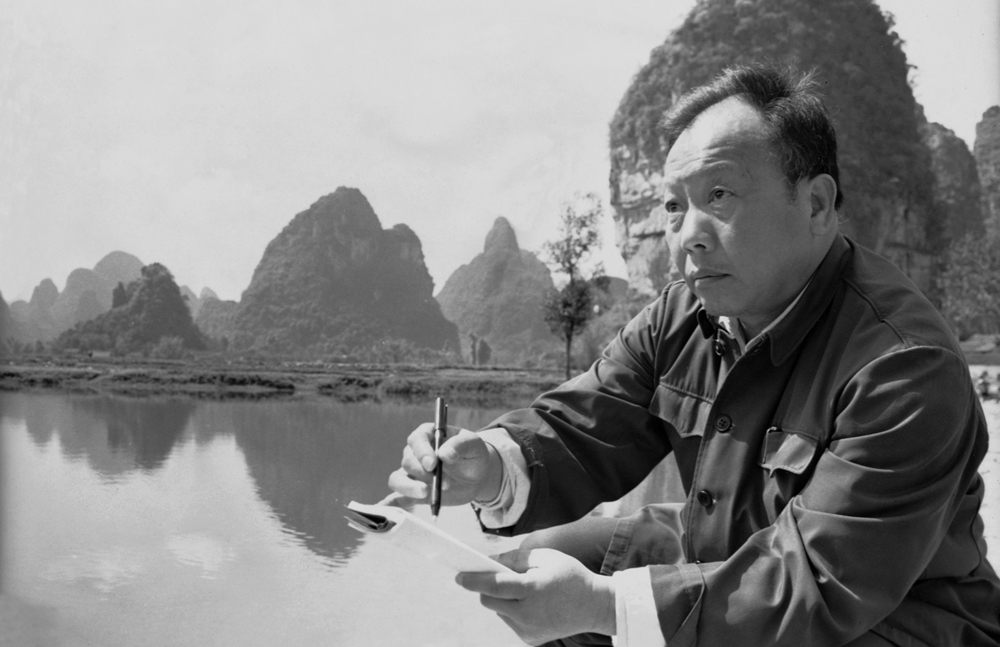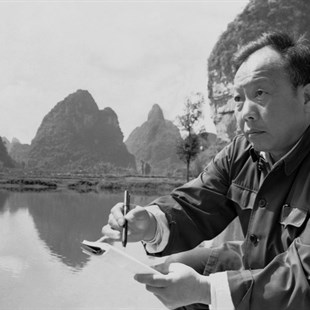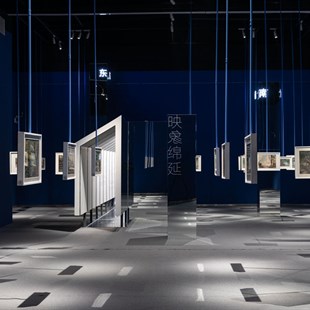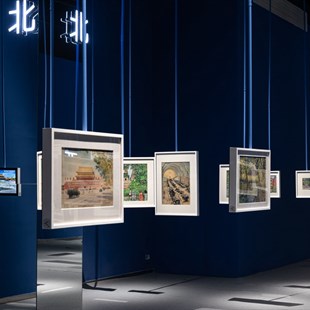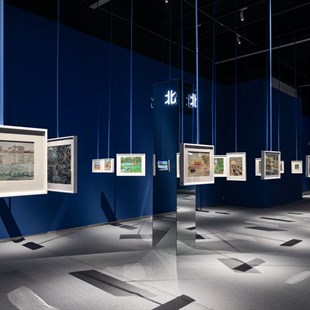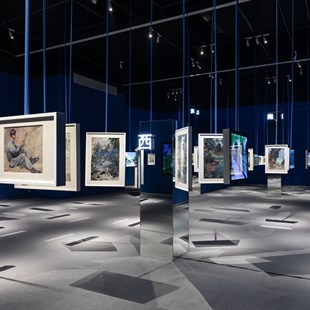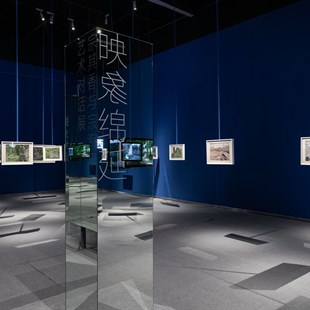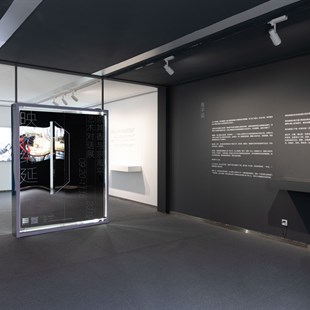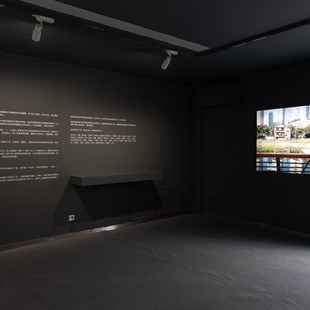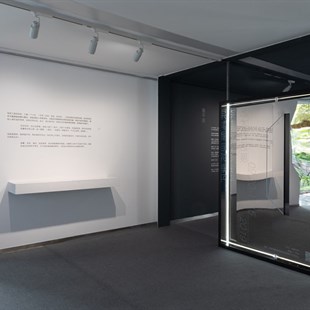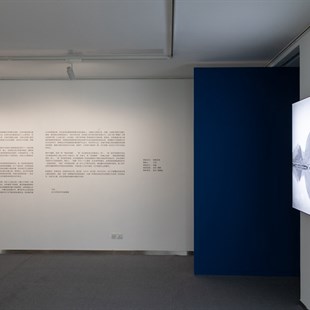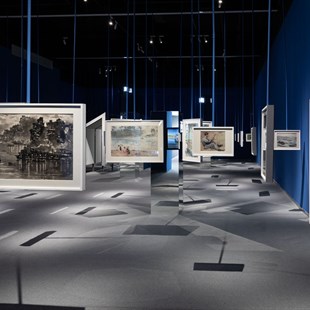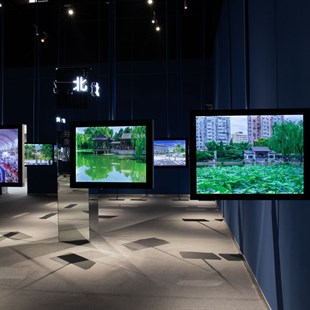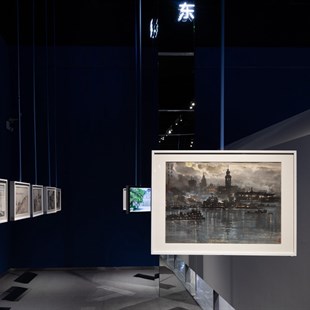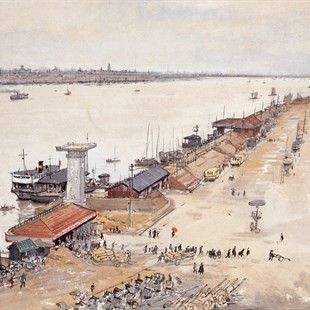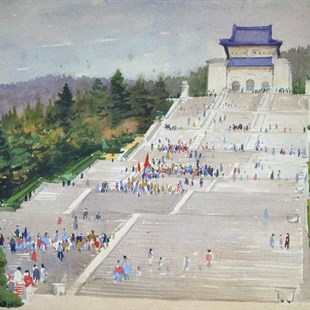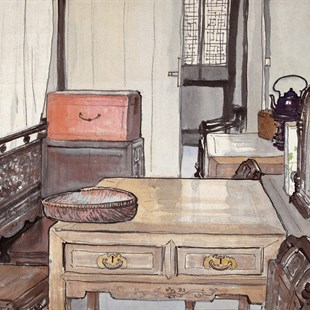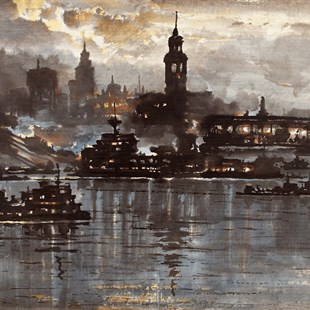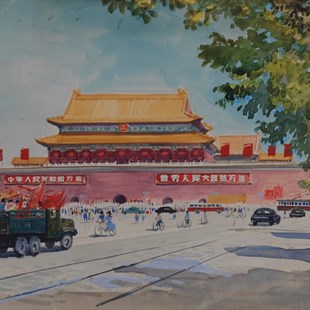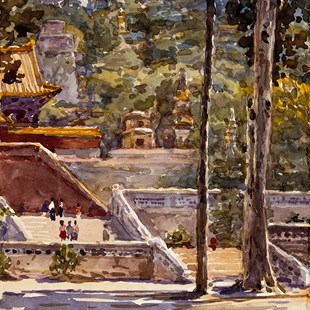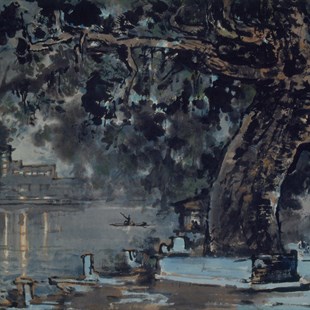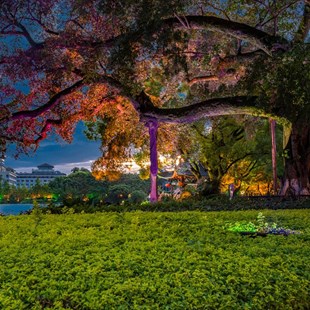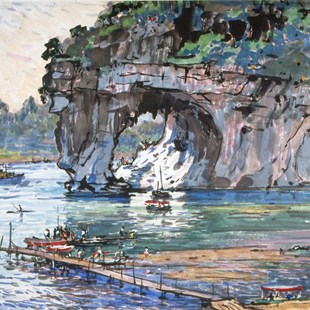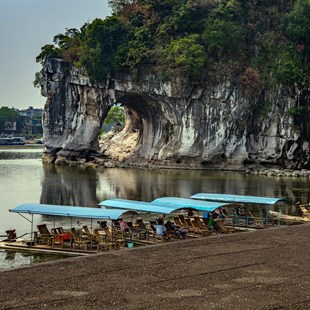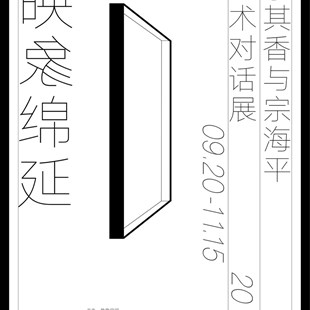2017 was the 100th anniversary of the birth of Zong Qixiang.
During this year, a series of chronological exhibitions along with archival documents that researched Zong Qixiang’s artistic context was launched. It is this series of events that have made Zong Qixiang, known as a student of art master Xu Beihong, and his typical artistic style of “the integration of Western and Chinese art”, gradually emerge within the realms of the academic and the public. However, after the bustling atmosphere of Zong Qixiang’s centennial birthday, how can Zong Qixiang and his work be further recognized through exhibitions, publications and research in the future? It should be a vital issue that the academic circles would continually explore.
At 4 pm on 20th September, 2019, the exhibition “Continuous Images: Art Dialogue Between Zong Qixiang and Zong Haiping” commenced in Shixiang Space, which could be regarded as a contemporary attempt in regards of the discussions on Zong Qixiang. The exhibition presents 68 sketches from Zong Qixiang, together with 68 photographs of Zong Haiping who created in the way of tracing the original sites of his father’s paintings. Using a form of artistic dialogue to represent Zong Qixiang’s creative thread, this exhibition intends to discuss the themes of paintings and photographs, father and son, family and country as well as epoch and art.
I. Exhibition Space: Painting Frame, View-finder and Dialog Box
When stepping into the exhibition hall, spectators may notice that the entrance hall is divided into four sections by a rotating mirror poster, namely, “Curator’s Words”, “Qixiang’s Sayings”, “Haiping’s Phrases” and “The Public’s Interpretations”. The main hall features four pillars marked “East”, “South”, “West” and “North”, which indicates the various original coordinates of Zong Qixiang’s sketches. Moreover, paintings and corresponding photographs are attached to opposite sides of the numbers of hanging devices. The use of mirrors and the time tunnel-like design of chronology transform the space into a contemporary exhibition scene.
Although Zong Qixiang’s landscape paintings are with the imprint of times, the delivered spirit behind those paintings remains still lively and fresh. He used brushes to record the national landscapes, social changes and urban scenery from 1939 through to 1992. Based on this, Zong Haiping has traced his father’s footprints and used the camera as the tool to represent the views recorded in Zong Qixiang’s paintings, and he further integrates them with contemporary social images and people’s livelihood.
Liu Xiang, the designer of the exhibition space, shared his design concept in the opening ceremony. The form in terms of involving corresponding photographs with Zong Qixiang’s original artworks is unique compared to any other previous exhibitions related to Zong Qixiang. The use of light-boxes and mirrors has reinforced the concept of father and son dialogue across time and space. The notion of “frame” repeatedly appearing in this exhibition can be interpreted through three perspectives, namely, Zong Qixiang’s painting frames, Zong Haiping’s camera view-finder and the dialog box. Various dimensional understandings of “frame” encounter each other in this space.
Immersing in such a space for dialogue, spectators can move around to view 68 sets of photographs and paintings. The time tunnel-like chronology depicts Zong Qixiang’s life experience in every decade, which implies the shared future of Zong Qixiang and Zong Haiping. At the very end of the times tunnel, the image of Zong Haiping’s daughter showcases the next generation’s inheritance.
This dialogue about Zong Qixiang and his artistic inheritance is visualized in the exhibition hall using the language of design. It leads the audience to retrospect China in the last century, meditate and experience the current and look to the future.
II. The Scenes Behind the Paintings: Zong Qixiang’s Artistic Representation
In Zong Qixiang’s artistic career, he advocated to experience life in-depth and learn from nature. Through real-life sketching, Zong Qixiang explored the charm of the famous mountains and rivers across China and recorded our changing society. Various motifs involved in his paintings in this exhibition witness his experience over thousands of miles and efforts on depicting a number of scenes during his entire life.
When Zhou Zhilong recalled his supervisor Zong Qixiang’s sketches in the opening ceremony, he described the details of those drawings as a few strokes, some small arrows and a few words which greatly impressed him. “They are abstract and even not readable.” Zhou Zhilong commended on those sketches. He explained that Zong Qixiang’s sketches are nothing about technique, but it is the instant experience and considerations that count. Based on these abstract lines and patterns, the artistic transformation can eventually be realized.
Zong Qixiang developed the traditional way of expression in his landscape paintings by involving western notions. During his exploration of “the integration of Western and Chinese paintings”, he introduced the concepts of perspective and light and shadow into ink paintings, which enables Chinese ink paintings to become lively and bright. Viewing Zong Qixiang’s works at present, audiences can experience both a sense of history and an eternal spirit and emotion behind these works.
III. A Dialogue Between Father and Son: About Love and Inheritance
Curator Yu Yang uses painting and photograph, father and son, home and country as well as epoch and art to summarize the contents of this exhibition. Besides Zong Qixiang’s homeland feelings and times which are conveyed through his works, the dialogue between father and son across time and space could be the most touching composition in this exhibition.
It is known that Zong Qixiang’s night scene painting is both characteristic and an excellent embodiment of his exploration of “integrating Western and Chinese paintings”. By employing Western painting techniques and combining them with Chinese painting media, Zong Qixiang used the darkness of the ink in various degrees to outline the foreground and background. He paid attention to depicting the changing clouds and misty moonlight to present a peaceful night scene.
In Zong Haiping’s perspective, taking the camera as a vehicle to deliver his artistic pursuit, he traces his father’s ways of exploration and focuses on the same coordinates as the scenes in Zong Qixiang’s paintings for recreation. In addition, he involves elements such as vibrant lights and colors in his photographs to showcase the contemporary development and social and technical changes as well as scene representation.
Since 2013 when Zong Haiping conducted the “contrast photos” project, the whole process has showcased a family dialogue between father and son, as well as an artistic inheritance within two generations.
Mr. Xu Qingping shared his feelings regarding the rapid development of this new epoch in China at the symposium after the opening ceremony. In his view, in this era, although many artists could paint with machines, he believes that the more rapid development and transformation that have been triggered, the more valuable a real painter is. Zong Qixiang used ink and brushes not only to depict realistic scenes but also to inject fresh vitality and a dynamic spirit to the subjects. In Zong Qixiang’s works, an artistic expression based on the artist’s examination, consideration, selection and transformation to realistic subjects can be embodied. By doing so, artworks can stay alive and vivid after experiencing significant social development and changes over hundreds of years.
In a word, from the perspective of the form of an exhibition, this dialogical display is a successful contemporary attempt in terms of promoting the senior generation of artists. Meanwhile, it also intends to invite spectators to make reflections – in this new era featuring high-technological art and digital media. When retrospecting predecessors’ life experience and artistic spirit, what we can learn from and inherit are not only techniques but also perseverance and strength of character.
About the exhibition:
“Continuous Images: Art Dialogue Between Zong Qixiang and Zong Haiping”
Curator: Yu Yang
Duration: 2019.9.20-2019.11.15
Venue: Shixiang Space, E2 GIRI Beijing International Art Zone, No.6 Jinjiacun Middle Street, Gaobeidian, Beihuayuan, Chaoyang District, Beijing
Text by Emily Weimeng Zhou
Edited by Sue/CAFA ART INFO
Photo courtesy of the organizer


